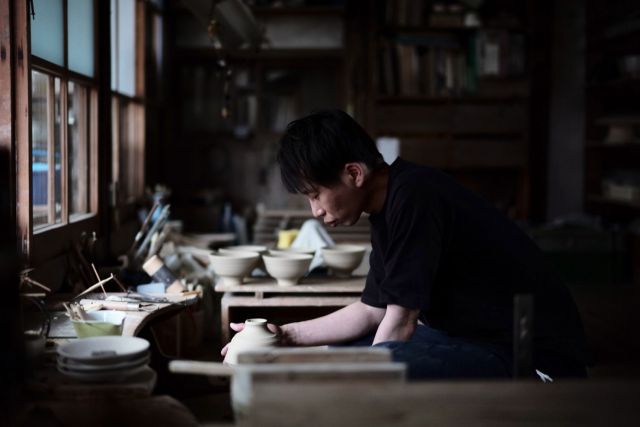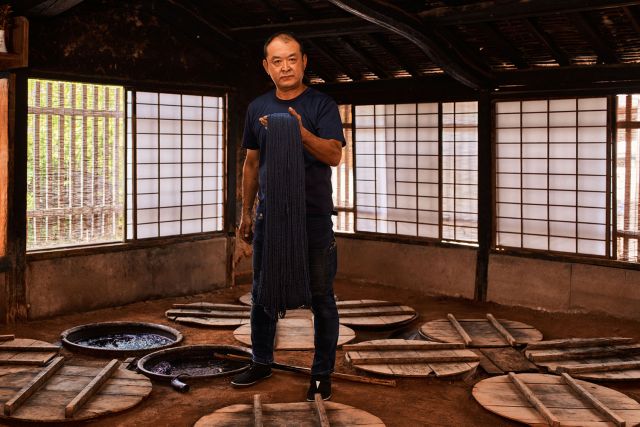This natural colour Panama hat is woven from residual balbisiana fibres, which are not used for the Basho cloth fabric. The trunk of Musa balbisiana is composed of 17 layers, with the 13 innermost layers being used for producing cloths. Sonoda Rie (daughter of Yasuhiro and Ritsuko Fukushima) uses the remaining raw material to knit hats.

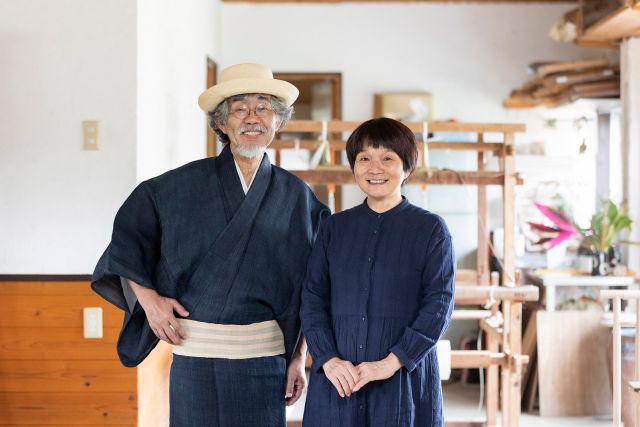
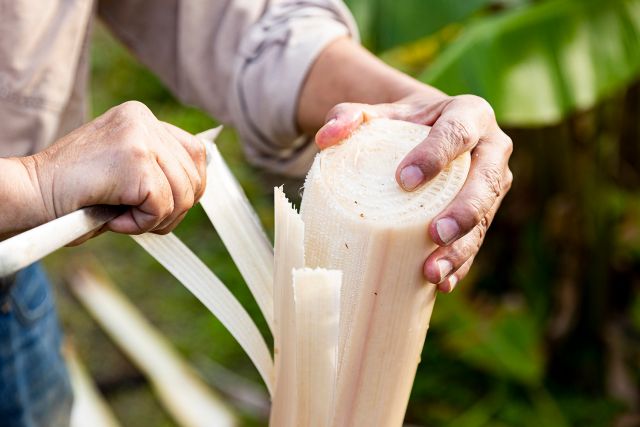
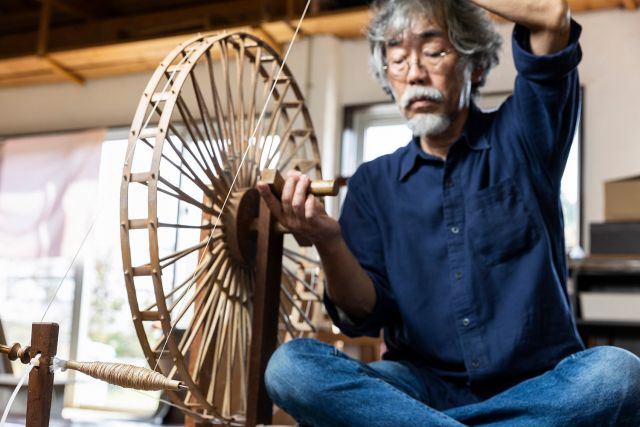
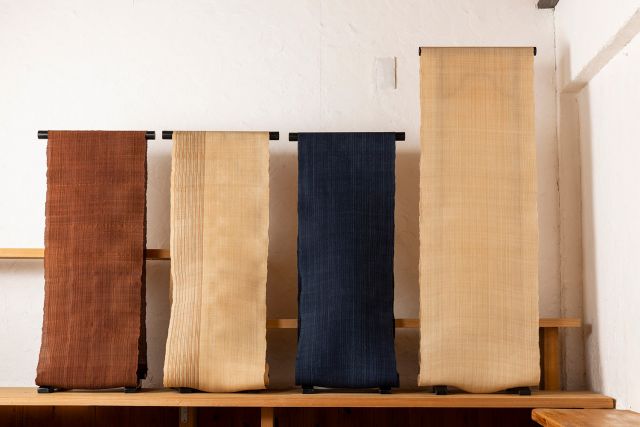
Yasuhiro & Ritsuko Fukushima
- Banananesia
- Weaver
- Nakijin, Japan
- Master Artisan
Jyana 697-3, 905-0414 Nakijin, Japan
Daily 09:00 - 17:00
+81 980563020
From seed to weave
- • Yasuhiro and Ritsuko master together the entire production process
- • They started to make paper for the restoration of precious documents preserved by the Okinawa prefecture
- • They live in harmony with their environment and have a zero-waste approach to their craft
Yasuhiro and Ritsuko Fukushima have been running their dyeing and weaving atelier since 1992. Yasuhiro's studies in anthropology led him to the Okinawa islands, in the southernmost prefecture of the Japanese archipelago. With a major focus on the Ryūkyū Archipelago, he wanted to settle in the region to experience it as a seikatsu-sha – a person who pursues “the everyday life.” With the bashō, or the fibre from the Musa balbisiana stem, Yasuhiro learned to master the complete process of clothes and paper making. In parallel, his wife Ritsuko has specialised in Bingata, the traditional dyeing technique from Okinawa. Her dedication to Bingata since the year 2000 comes from her initial passion for illustration, the incredibly rich nature of the island, as well as her appreciation of the bashō that her husband provides her with. They both feel gratitude and respect for working as a couple with such a precious material.
Read the full interviewWorks
Photo: ©All rights reserved

Photo: ©All rights reserved
These are paper bookmarks. The paper is made from Musa balbisiana fibre that was dyed using the Bingata technique, a traditional stenciled resist dyeing technique originating in Okinawa Prefecture. The flower patterns with colourful pigments are typical of the region.

Photo: ©All rights reserved
The Obi (Kimono belt) is yarn-dyed to create subtle shades in the fabric. It is woven from carefully selected high-quality fibre portions of Musa balbisiana.

Photo: ©All rights reserved
This textile is hand-woven from carefully selected high-quality fibre portions of Musa balbisiana, which grows in a subtropical climate. Customers can tailor the motif before purchasing it.

Photo: ©All rights reserved
The fibre that is not used for Basho textile making is cooked with wood lye and beaten to make paper. The paper sheets are stacked on a floorboard, drained, peeled off one by one, and dried. The dried Basho paper is dyed with Ryukyu indigo using the piece dyeing technique.





